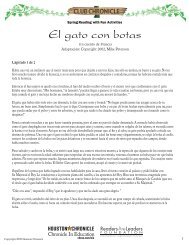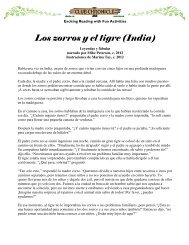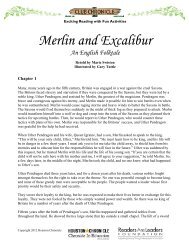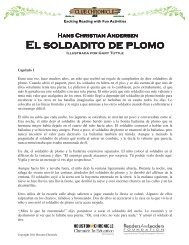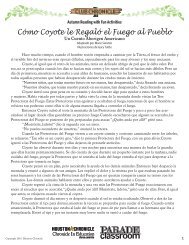Download
Download
Download
You also want an ePaper? Increase the reach of your titles
YUMPU automatically turns print PDFs into web optimized ePapers that Google loves.
Pol l i ng the PlanetAt the first Earth Day in 1970, people gathered together to advocate localpollution controls. Residents of Cleveland demanded the clean-up of theCuyahoga River, a river so polluted with petroleum-based chemicals that itssurface caught fire and Lake Erie, one of the Great Lakes, almost devoid of allfishlife. In New York City, protests focused on the city’s smog and the fishkills onthe Hudson River. People in Pittsburgh wanted their city's infamous air pollutionreduced. In Los Angeles, well known for its fierce lung-choking smog, peopleadvocated for cleaner air.The good news is that many smokestacks have been cleaned, and the Cuyahogaand Hudson Rivers, as well as Lake Erie, are far less polluted. Still, there continueto be many issues to discuss, learn about and act upon.But today’s environmental issues are very different. Many are global in scope.You may have read about global warming, the possibility that the Earth's climateis increasing and becoming hotter, due to an increase in atmospheric gases likecarbon dioxide, generated from cars, buses, factories and power plants. Peopleare also working on ozone depletion, a seasonal lessening of the amount ofozone in the atmosphere high above Antarctica. And, due to the release ofozone-eating chemicals like CFCs (chlorofluorocarbons) from air conditionersand refrigerators, moresolar radiation shinesthrough the atmosphere.This conditionincreases the riskfor skin cancer thatwe all face.Habitat loss is another global issue scientists and environmentalists areaddressing. Many habitats are in trouble. We must prevent habitat loss in order toprevent the loss of biodioversity – the decline in the number of species inhabitingour planet. Ecologists are working hard worldwide, hoping to save natural habitatsthat include the coral reefs, rainforests and prairies.The problems and challenges of rainforest preservation are a good example.Much of the tropical landscape is covered by rainforests – huge expanses of landthat include many species of plants and animals. Rainforests around the world aresuffering from numerous threats, especially from being burned down to createfarmland. Of course, the people who live alongside the rainforests need food to eatand money to live. Unfortunately, many of them burn down the rainforests inorder to turn the area into farmland. But, the land is not really good for farmingand after a few years, they desert the land, having destroyed the rainforest. Realrainforest preservation must include finding ways for people who live near theseforests to grow food and earn a living while keeping the forests intact.Here’s your job.Below is a list of 10 environmental issues. Rank each issue in order of importance.Give a number 1 to what you think is the most important environmental issue ofall, a number 10 to the least important issue. Fill in all the blanks in between.Write your ranking on the line next to each one.Next, compare your answers as a class. Work with your teacher to compute anaverage score for each listing. Remember, since 1 is the most serious, the mostimportant issue will have the lowest average. Which issue does your class considerthe most important? Which the least? Talk about the difference between leastimportant and unimportant. Are any environmental issues really unimportant?Now devise a way to take a poll of 100 students in your school. How does the100-student poll compare to your class results? Do a poll of 10 adults in yourschool. Do the adults and kids in your school agree on the most important issue?Try to explain your results. How and why are they the same or different?______ Too much litter on roadsides and in public parks.______ The decline in the number of species living on Earth.______ The creation of too much solid waste, with too little recycling.______ The hole in the ozone layer from the release of CFCs.______ The possible warming of the planet’s climate from greenhouse gases.______ The pollution of rivers, streams and oceans from both industry andhouseholds.______ Loss of natural places as land is developed into malls, roads, and houses.______ The pollution of the air, especially during the summer, from urban smog.______ The loss of important habitats, like rainforests, coral reefs, wetlands,and old growth forests.______ The creation of too many dumping grounds from toxic chemicals.Other:Check Out The Newspaper!Learning standard: exploring the interrelationshipsof habitats and organisms◆ Can you find news stories abouthabitat conservation and biodiversity?◆ Write a letter to your newspaperabout the results of your school poll.◆ Find articles in the newspaperabout the environment.◆ Write a letter to the editor of yournewspaper about what you see as themost important conservation issue inyour community.◆ Compare how your newspaper andthe tv news cover an environmentalnews story. Discuss with your classhow they are different and the same.15




